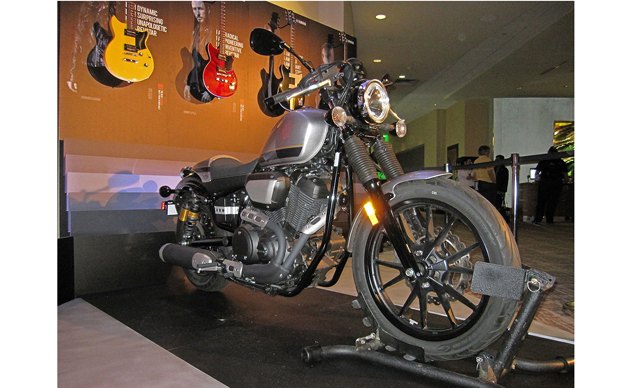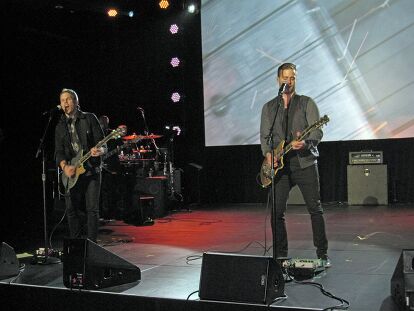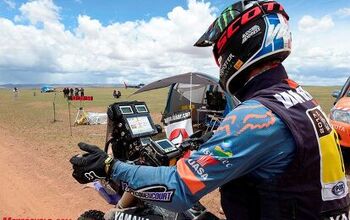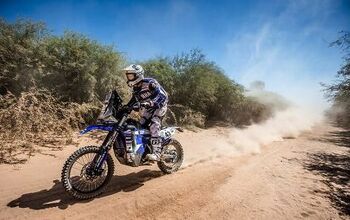Yamahas On The Stage And The Road
"Two Yamahas, One Passion" could help raise the tuning fork brand's visibility
Everyone reading this knows Yamaha as a manufacturer of motorcycles, but probably less of you know the company actually began as a musical instrument manufacturer. Strangely to some, Yamaha has never used its brands in a cross-promotional setting. Until now.
For the first time since Yamaha began in 1887 and Yamaha Motor Corporation began in 1955, the tuning-fork brand intends to cross-market the product lines of the two entities whenever it deems it to be beneficial. The message is: “Two Yamahas, One Passion.”
This new strategy coincides with the recently added responsibilities of Yamaha Motor Corporation U.S.A.’s Bob Starr from his position as Communications Manager for the Motorsports Group to the newly created role of Corporate Communications Manager for YMUS. So, the amiable powersports industry veteran is tasked with helping build the Yamaha brand at the same time as the powersports and music divisions in Japan began to recognize the synergies of working together.
It’s a role that Starr was happy to take on because, as he put it, now “is truly a unique time in the history of Yamaha.”
While the company’s two main U.S. headquarters — motors, and music — are located only a few miles from one another in Orange County, California, communications between them has traditionally been kept to a minimum. Their relationship was not necessarily adversarial, but it was about as far from synergistic as you can get.
The “Two Yamahas, One Passion” strategy is an opportunity to change all that, but there will be challenges, such as how to integrate and streamline the message and make it unique to Yamaha without diluting the character of the products.
For example, watching an ad in which an R1 rider has to weave through a battery of grand pianos in order to make a point about how well the bike handles would border on silliness. But an ad in which a group of motorcyclists ride their Star cruisers to the local club to play a gig with their Yamaha instruments could make a lot of sense.
It’s a subtle message that could work for both platforms, especially the music side, which simply doesn’t do TV. After all, when was the last time you saw a spot for Yamaha musical instruments — or any other music brand, for that matter? Yamaha’s presence in both powersports and music makes it the only company with an opportunity to acquaint musicians to its motorcycles, and powersports fans to its musical products.
Too much of a stretch? That will depend on how it is handled, of course, but it’s true that both products evoke a sense of passion and of freedom in their users. A player can get lost in the music just as easily as a rider can enjoy the journey more than the destination. Also, both share more common ground in that they require training, practice and discipline to attain levels of proficiency that greatly enhance their fun factor.
If there is one thing that Starr and his powersports team has been adamant in communicating during his 24 years at Yamaha, it is that Yamaha sells fun. Now, he wants to do the same for Yamaha Music, and if presenting a united front among both music and powersports helps to promote either, it is going to happen.
“What we can do with two companies, building the Yamaha brand even stronger, is limitless” Starr said.
The 2016 National Association of Music Merchants (NAMM) show will be remembered as the starting point for the Yamaha tie-in. The NAMM show, held annually at the Anaheim Convention Center, smack dab in the middle of Yamaha’s SoCal backyard, is the largest music products industry trade show in the world, hosting about 100,000 attendees from around the globe.
This year, Yamaha used the NAMM show to introduce its new Revstar line of solid-body electric guitars, the first new Yamaha electric in 10 years. Sharing a display with Revstar was a brand new Bolt C-Spec cruiser. Starr said there are thematic parallels to be drawn in these two very different products that are consistent with Yamaha’s new message.
“The Bolt C-Spec is styled to be a café racer — people growing up in the 1960s can remember motorcycles with that type of styling,” Starr said. “The electric guitar is also that way. It has a soul. It is kind of urban and kind of gritty.”
Yamaha Introduces Revstar Guitars
On January 22, the second night of the 2016 NAMM show, Yamaha invited us to its industry party and artist showcase. The Yamaha-supported lineup – all of which played Yamaha instruments – included the outrageously talented violinist Caroline Campbell, who tours with the likes of Andrea Bocelli; Toto keyboardist David Paich; pianist and singer Jon McLaughlin; with the legendary Nathon East (Eric Clapton, Phil Collins) on bass guitar.
Showcasing the new RevStar guitar was the pop rock band Apollo LTD, who played in front of video screens featuring the Star Bolt C-Spec in action. The music played, and the message worked. It was rock video 101: loud guitars and fast cars — or in this case, motorcycles.
The link of music and motorcycles has long roots. Back in 1946, a fellow by the name of Paul Bigsby was a machinist for the Crocker Motorcycle Company in Los Angeles. History shows that Bigsby also had a passion for country and western music, and that passion led to a good friendship with a fellow motorcyclist who also happened to be an accomplished country and western musician, Merle Travis. One day, Travis brought one of his guitars to Bigsby and asked him to repair the instrument’s broken tremolo tailpiece. Bigsby not only fixed it, he quickly realized its shortcomings and went on to design a whole new system that worked even better. Bigsby tremolos became one of the most sought-after products of guitarists, and they’re still widely used today, including on Yamaha’s Revstar RS720B.
One year later, in 1947, Bigsby and Travis collaborated on the world’s first solid-body electric guitar, which Travis used on some of his recordings a full year before another Southern Californian named Leo Fender was credited with revolutionizing the music industry via his solid-body electric, the Fender Broadcaster.
So, in a way, a motorcyclist is the reason the solid-body guitar exists in the first place!
More by Scott Rousseau





































Comments
Join the conversation
Semi-hollow body guitars are awesome. The Bolt looks seriously awesome but sadly has one of the most uncomfortable seats at the motorcycle show, for me. I guess that's my next blues number!
Very interesting cross disciplinary marketing effort though.
Thanks for the interesting background on Bigsby. As far as solid bodies go, the Wizard of Waukesha has to be considered. Although he wasn't a motorcyclist that I'm aware of. There definitely is a lot of crossover from bikes/guitars so I understand this marketing effort. In solid bodies trying to crack the Les Paul/335/Stratocaster/Telecaster branding (and sound) has got to be a challenge.